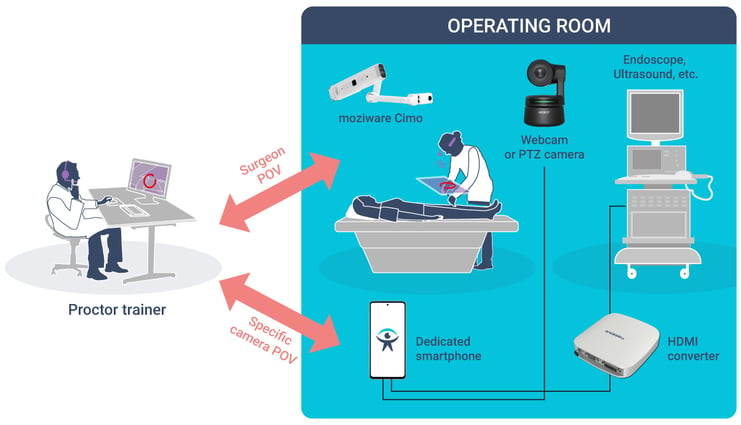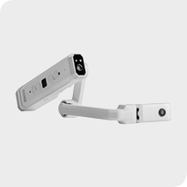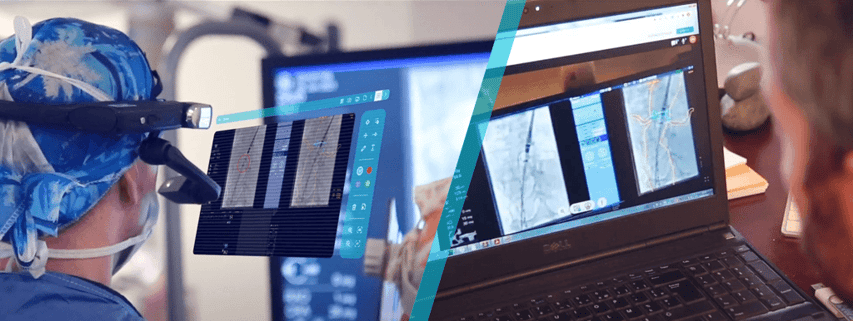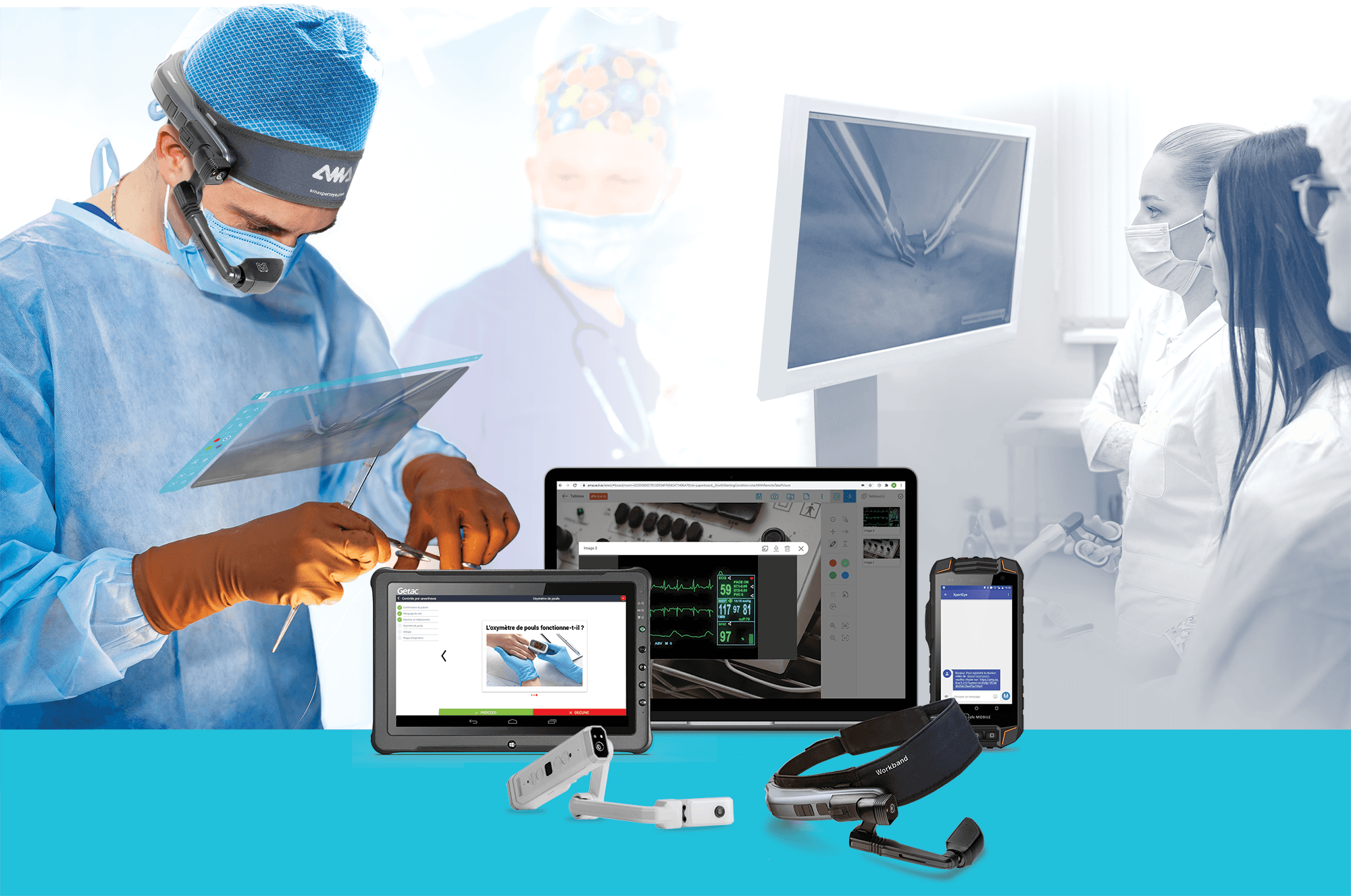Key Takeaways
- Remote medical proctoring is a procedure that transforms an operating room into a digitally connected environment.
- It is ideal for surgeons on-site and off-site to collaborate and share the best practices.
- Hardware like smart glasses, smartphones, and video capture device simplifies remote proctoring.
- Software features like multi-stream, camera settings, full HD video quality, and collaborative board facilitate remote proctoring.
- An example of how vascular surgeons in France carried out a successful remote surgery with the right proctoring tools.
The rise in remote proctoring
In surgery and medicine, low latency, and high bandwidth technology such as 5G opens opportunities for remote proctoring, long-distance monitoring, remote mentoring, and even remote surgery. With these rapid advancements in telecommunications and technology, remote proctoring is gaining traction.
“Remote medical proctoring can be defined as a procedure that can transform an operating room into a digitally connected environment allowing surgeons on-site and off-site to collaborate and share the best practices.”
During the most complicated surgical procedures, remote experts using a remote assistance solution can supervise, advise, and collaborate safely with surgeons, equipped with smart glasses. They get access to the operating theater remotely, in real-time, from anywhere in the world, and can exactly see what the surgeon sees. These remote experts can be more experienced peers, clinical support representatives, medical specialists, etc.
What are the benefits of remote proctoring?
-
An experienced physician can bring specialized expertise or a second opinion to the surgeon during the operation and be by their side every step of the way.
-
If a proctor is unavailable, an alternative proctor can quickly connect
-
The proctor can do multiple cases on the same day, regardless of the location of the surgery
-
The surgeons, equipped with smart glasses, don’t need to turn their heads to see the monitor screens since they can see the information on their smart glasses. This takes away the discomfort and surgeon’s fatigue due to monitor-oriented operations, especially during long operations.
-
Improved patient care
-
Reduced risk of infection during COVID by reducing the number of people in the operating room
-
Reduced travel and facilitated high-quality surgery even in inaccessible locations like rural areas, war zones, submarines, etc.
|
Hardware simplifying remote proctoring

1. Video sources
-
Smart glasses | Surgeon’s view

A surgeon wearing smart glasses can use both hands to perform the surgery, and at the same time provide his point of view through his smart glasses to the remote expert. Similarly, he can use voice commands to take pictures, zoom in or out, etc.
On the other side, the remote proctor can provide clear instructions, The remote proctor can also record the entire operation and manage different connected cameras (such as a PTZ camera) at a distance.
The PTZ camera is ideal to provide a panoramic, 360° view of the operating room.
With the pan (horizontal orientation), tilt (vertical orientation), and zoom functionality of this camera, the video stream can be remotely controlled to view the operating room from various positions and angles. In short, this camera will give a whole room view of the operating theater and the surgery for remote viewers.
-
Third-party cameras | Detailed, specific view

The use of additional cameras such as a PTZ camera, an endoscope, echography, fluoroscopy, dermatoscope etc. depends on the use case of the surgery but can provide an additional specific point of view.
2. A dedicated smartphone
It allows for easy management of connected cameras such as an ultrasound, PTZ camera, endoscope, etc.
3. Video Capture Device
This portable device converts any HDMI, DVI, DisplayPort, SDI, s-video, or VGA signal into a digital signal, enabling users to retrieve use video sources from many devices.
Software capabilities facilitating remote proctoring

A remote assistance solution like XpertEye supports multi-source video inputs with additional features to facilitate remote surgery. Here are some software features and functionalities that are ideal for collaborative remote surgery.
Camera settings
|
With XpertEye, a remote expert can adjust the quality of the video, depending on the circumstances. For instance, the scialytic light in the surgery room can alter the images of the video, decreasing the level of detail. So, the remote expert can re-evaluate the white balance constantly and decrease exposure time to minimize the bright light's impact.
|
Multistream
|
This feature allows sharing of up to 4 feeds in a collaborative call. This way remote views can experience different points of view that can be controlled remotely (PTZ, smart glasses) to provide better context when compared to a single video stream.
|
Full HD video quality
|
Every detail matters for the distant expert during the surgery, so the live video should be set in a way where a maximum of details of the operation are transmitted.
|
Collaborative board
|
XpertEye has an intuitive board that allows collaborators to communicate directly and synthesize information. For example, the remote expert can take a picture, make annotations to highlight an area, etc.
|
AR Pointer
|
An AR pointer allows the remote expert to indicate and attract the surgeon’s attention to a specific area.
|
Record
|
The remote expert can record the collaborative call, for documenting purposes or for the training of future surgeons.
|
Cloud-based scalable
and secured platform
|
With XpertEye, users’ data is highly secure and never stored. The platform is hosted on data centers that are HIPPA and HDS compliant which ensures the handling and storage of sensitive patient data. Similarly, users can have peace of mind with E2EE (end-to-end encryption) and GDPR compliance.
|
Live surgery use case: Rennes University Hospital and Medtronic
“For example, during a procedure that involves implanting an aortic prosthesis, I might need technical assistance for some crucial points of the intervention, especially for the delivery of the prosthesis. With XpertEye, the remote medical technical engineer can help me determine the delivery area very precisely, reducing the risk of error. The technician can keep a constant eye on the operating procedure and confirm the area where the prosthesis must be implanted is correct. If I need some clarifications, the engineer can make an annotation on the screen and show me certain details on the image to alert me. This way, we can exchange views on the operating strategy”
Dr. Kaladji, a vascular surgeon at Rennes UH
XpertEye allows Dr. Kaladji, a vascular surgeon at Rennes UH, to collaborate remotely with a medical-technical engineer from Medtronic during surgery, thereby reducing the risk of error.
Taking surgery beyond the operating room
Establishing efficient and confidential audio-video communication is an important aspect of advanced patient care. Without any doubt, quality training and collaboration lead to more life-saving movements.
At AMA, we are bringing live, real-time advice and support from anywhere in the world while reinventing what is possible in the operating theater.
Get in touch with one of our project managers if you want to find out how to provide proctoring assistance globally from the click of your computer.

